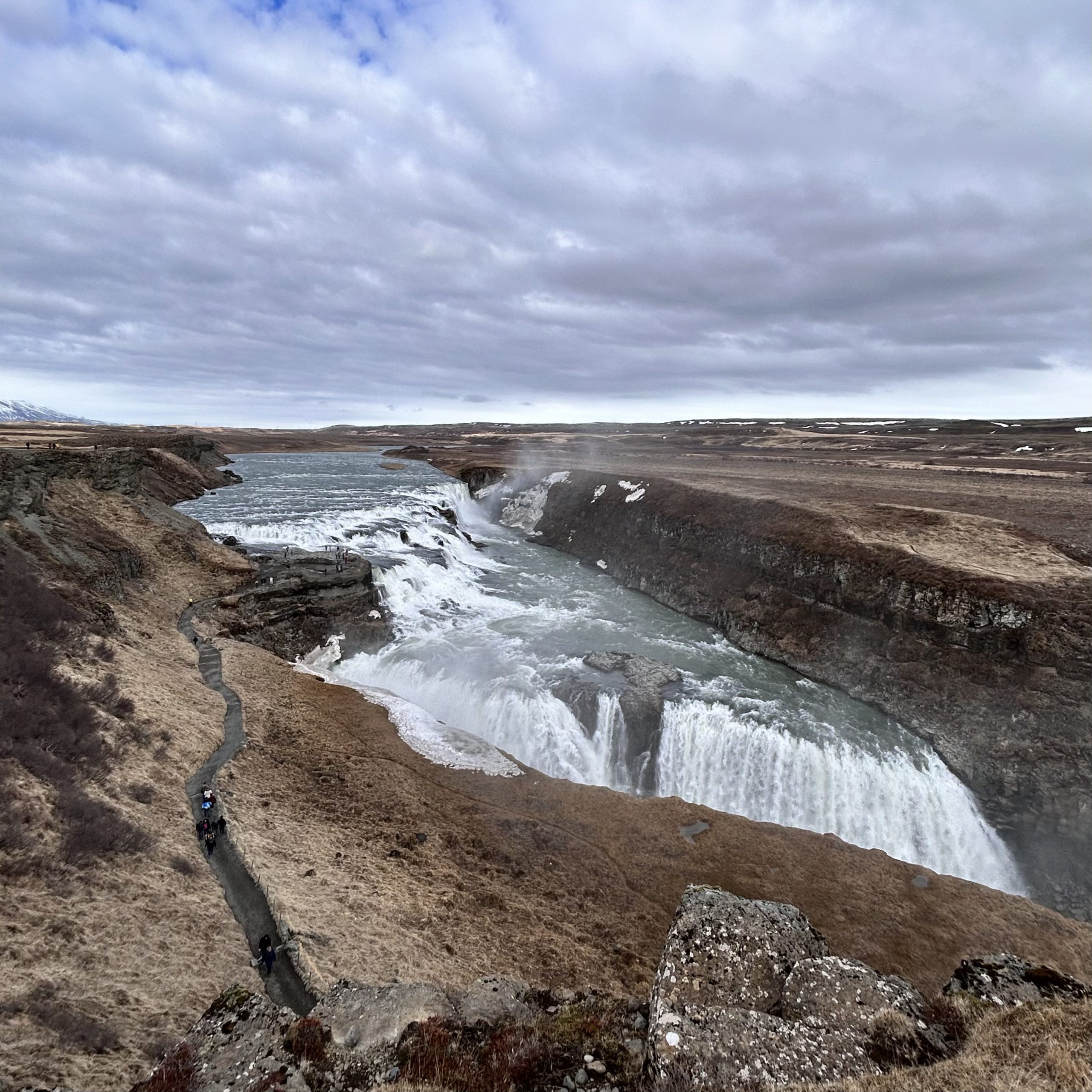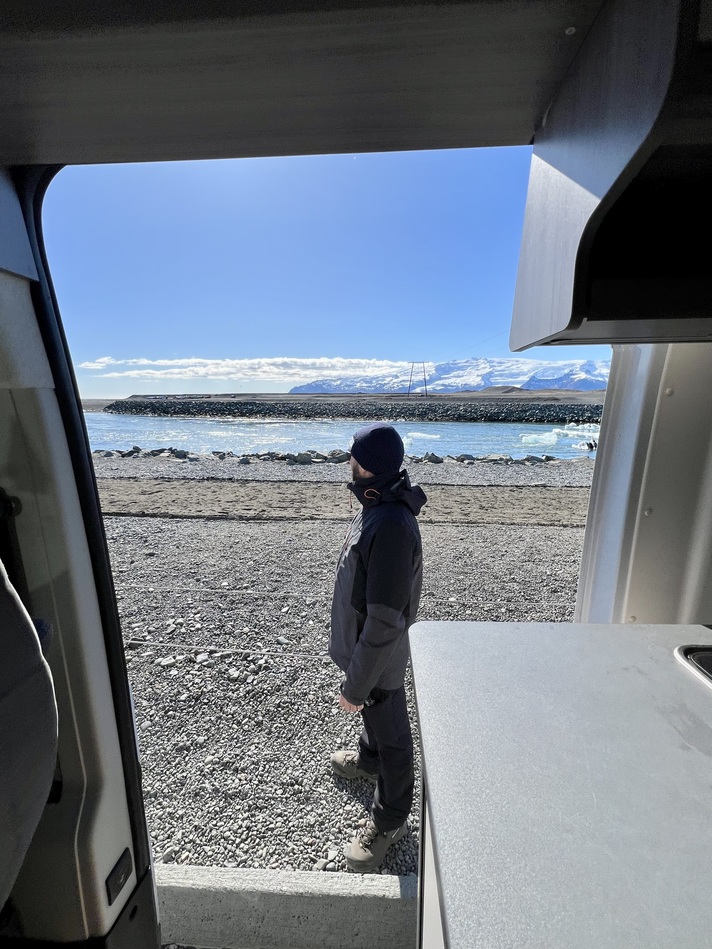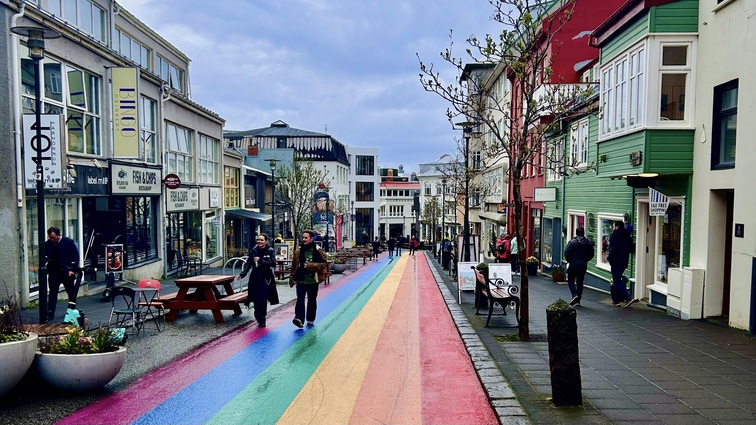Iceland by van: my seven-day touring adventure
When it comes to traveling in Iceland, the van is a choice that elevates the experience to a whole new level. Not only because of the freedom of movement, but also because of the convenience of having everything at your fingertips.
Traveling with a mobile home allows you to have a self-contained kitchen with you at all times, which in a country like Iceland, where restaurants can be expensive and not always easy to find, is a great advantage.
Every evening you can prepare a hot meal while enjoying the breathtaking view of the surrounding landscapes.

Index
The south and southwest route
To visit the whole island, I recommend doing it in at least 8 to 10 days, so that you can take your time since you will probably have to drive a vehicle independently.
Choose the season well based on what you want to do once you get there. For example, for biking, late early vera or summer is preferable while late fall is recommended for glacier trekking(I wrote about it right here).
Having only seven days, and being my first time there, I decided to focus on the south side, which is full of incredible spots such as national parks, waterfalls or glacier.


Skaftafell National Park: glaciers, diamond beaches and wildlife
Skaftafell National Park is one of the most spectacular places Iceland has to offer. This park, which is part of the larger Vatnajökull National Park, is best known for its glaciers and numerous hiking opportunities. If you love adventure, you cannot miss a glacier hike that allows you to discover deep crevasses and unique glacial vistas.
Descending to the sea, you’ll find yourself on the famous Diamond Beach, a black sand beach that looks like something out of a dream. Here ice fragments, detached from the nearby glacial lake Jökulsárlón, are pushed by currents to the shore, where they sparkle in the sunlight like huge diamonds. The scenery is surreal.
In the nearby lagoon, you have the chance to see another wonder up close: seals. These friendly animals often swim among the floating ice blocks or rest on the banks, providing a unique opportunity to observe Icelandic wildlife in its natural habitat. It’s a relaxing and fascinating sight that adds an extra touch of magic to your visit.
The Majestic Waterfalls: Seljalandsfoss, Skógafoss and Gullfoss
As you travel along Iceland’s south coast, you come across some of the country’s most spectacular waterfalls, each with a unique character and energy that captures you.
Seljalandsfoss is about 60 meters high, tumbling from a cliff that was once part of the Icelandic coastline. But what makes Seljalandsfoss truly special is the opportunity to walk behind the waterfall. A path takes you right under the arc of water, giving you an amazing panoramic view and the unique feeling of being surrounded by natural rain. Don’t forget a raincoat! The walk behind Seljalandsfoss is not to be missed, especially at sunset, when the light turns the water into a golden veil.
A little further along the Ring Road you will find Skógafoss, an equally impressive waterfall but with a different energy. At 60 meters high and 25 meters wide, Skógafoss is one of the widest and most powerful waterfalls in Iceland. What is striking is the roar of the water crashing to the ground, creating a mist that often gives spectacular rainbows, especially on sunny days. The beauty of Skógafoss is that you can get almost as close as you can touch it or climb a staircase of more than 500 steps that takes you to the top of the waterfall for a breathtaking view of the river and plains below. This waterfall is shrouded in legends: the first settler in the area is said to have hidden a chest full of gold just behind the water wall.
Finally, there is Gullfoss, one of Iceland’s most iconic waterfalls, located along the famous Golden Circle. The waterfall runs on two levels, first with an 11-meter drop and then with a 21-meter drop, into a deep and narrow gorge. The volume of water pouring into the bowels of the earth is impressive and leaves you speechless. Gullfoss is often called the “Golden Waterfall,” and not only because of its majesty: on certain days, the sun’s rays illuminate the water, making it shine as if it were really gold.
The Golden Circle: a path between nature and history
The Golden Circle is probably the most famous tourist route in Iceland, and not for nothing. What is in the Golden Circle besides the great waterfall of Gullfoss? This route takes you through three of the country’s most iconic natural and historical attractions, all located within a relatively short distance of Reykjavik. Perfect for a day trip, the Golden Circle allows you to immerse yourself in the beating heart of Iceland.
Þingvellir, or Thingvellir in English, is one of Iceland’s most fascinating and historically significant places. This site, located in the heart of the Golden Circle, is both a national park and a UNESCO World Heritage Site because of its unique combination of history and geology. It is the site where theAlþingi, Iceland’s ancient parliament, considered one of the oldest in the world, was founded in 930 AD. At this site, clan leaders and representatives met annually to discuss laws and resolve disputes, creating a tradition of democracy that has lasted for more than a thousand years.
The landscape of Þingvellir is also extraordinary geologically. Located on a fault separating the Eurasian and North American tectonic plates, walking here is literally walking between two continents. The valley is the result of the receding tectonic plates, which continue to separate by a few centimeters each year, creating a unique natural environment.
Silfra: snorkeling in a lake between two continents
But one of the most extraordinary spots on Þingvellir is undoubtedly the Silfra fissure, a rift between tectonic plates flooded with crystal-clear waters. This rift is one of the most famous places in the world to snorkel or scuba dive, and it offers an unforgettable experience.
The water comes from the nearby Langjökull Glacier and reaches the crevice incredibly clear and pure. Visibility can exceed 100 meters, allowing you to see every detail of the rocks and formations underwater. The thrill of literally swimming between two continents, with one hand in North America and the other in Europe, is unique in the world.
Geysir and Strokkur: geysers in action.
The second stop is the geothermal valley of Haukadalur, home to the famous geysers. The great Geysir, from which the term “geyser” is derived, is now almost inactive, but the nearby Strokkur erupts regularly every five to 10 minutes, launching jets of boiling water up to 30 meters high. The valley is an alien landscape, with boiling mud pools, hot springs and fumaroles emanating steam from deep within the earth. It is one of the best representations of the geothermal power that characterizes Iceland.

Reykjavik: between art, culture and unique atmospheres
Reykjavik, the world’s northernmost capital, is a city that surprises with its vibrant atmosphere and combination of modernity and ancient traditions. Although small compared to other European capitals, Reykjavik offers much to do and see, especially for those who enjoy art, culture, and local experiences.
What to do in Reykjavik
Hallgrímskirkja
The city’s most iconic church and one of Iceland’s architectural symbols. Inspired by the basalt columns typical of Iceland’s volcanic formations, Hallgrímskirkja is visible from almost anywhere in the city. You can climb to the top of the tower to enjoy breathtaking panoramic views of Reykjavik and the surrounding landscapes.
Walk along the harbor and the Sun Voyager sculpture
One of the most enjoyable walks in the city is along the waterfront. Here you will find the sculpture Sun Voyager (Sólfar), representing a stylized Viking ship, facing the horizon. It is a symbol of exploration and freedom, and often attracts photographers for its reflections on the sea.
National Museum of Iceland
If you want to learn more about Iceland’s history and culture, this museum is a must-see. The exhibits cover more than 1,200 years of Icelandic history, from its Viking origins to the present day. It is an ideal place to better understand local culture and traditions.
Geothermal pools and the Laugardalslaug
Reykjavik, like the rest of Iceland, is famous for its geothermal pools. Among them, the Laugardalslaug is the largest pool in the city and offers heated pools, saunas, and water slides, all fed by natural hot springs.
Curiosities
- Reykjavik means“Smoky Bay” and owes its name to the columns of steam rising from geothermal springs noticed by early Viking settlers.
- Despite being the capital city, Reykjavik has a surprisingly quiet and friendly atmosphere, almost like a large village. Icelanders are known for their hospitality and sense of community. The city is also famous for its music scene.
Reykjavik has been the birthplace of famous musicians such as Björk and Sigur Rós, and hosts world-class music festivals such asIceland Airwaves.
Snæfellsnes Peninsula: a mini-Iceland
The Snæfellsnes Peninsula, located in southwest Iceland, is often described as a “mini-Iceland” because it contains an extraordinary variety of landscapes that represent many of the country’s natural features. In a relatively compact area, you can see mountains, glaciers, volcanoes, black sand beaches, waterfalls, and sheer cliffs. This makes Snæfellsnes a perfect destination for those who want to explore the essence of Iceland in one place.
Snæfellsjökull: the legendary volcanic glacier
At the center of the peninsula stands the majestic Snæfellsjökull, an ice-covered volcano that inspired Jules Verne’s famous novel Journey to the Center of the Earth. This volcanic glacier is one of the symbols of Iceland, and it is visible on clear days even from Reykjavik, more than 120 km away. Snæfellsjökull is rich in legends and mysteries, considered by many to be a place charged with spiritual energy.
Kirkjufell: the iconic mountain of Iceland
Another must-see attraction is Kirkjufell, the “Church Mountain,” one of Iceland’s most photographed peaks due to its perfectly conical shape. It is located near the town of Grundarfjörður and, in combination with the Kirkjufellsfoss waterfall, creates one of the most iconic and striking views on the entire island. The mountain is especially fascinating at sunset or during winter, when the northern lights dance in the sky above it.
The black sand beaches and cliffs of Arnarstapi
The Snæfellsnes coast is famous for its spectacular black sand beaches and sheer cliffs. Djúpalónssandur beach is one of the best known: here, the remains of an old shipwrecked ship are scattered along the shore, creating an almost surreal atmosphere. This area, once inhabited by fishermen, is surrounded by rock formations sculpted by the waves, making it perfect for long walks. Not far from here is the small village of Arnarstapi, famous for its incredible cliffs, where colonies of seabirds nest in summer. The area’s volcanic rock formations, such as the natural arch Gatklettur, add a dramatic touch to the landscape.
Ytri Tunga: the seal beach
Another fascinating stop on the peninsula is Ytri Tunga, a beach known for its seal colonies. Unlike Iceland’s classic black sand beaches, here you will find a sandy, golden shoreline, a perfect place to relax and observe these friendly animals in their natural habitat. The seals are especially active during the summer, but it is possible to spot them year-round, especially in the early morning or late afternoon hours.
Bjarnarfoss waterfalls and other natural wonders
Snæfellsnes also offers some lesser-known but equally fascinating waterfalls. Bjarnarfoss is one of the most striking: it drops from a rock face and, on windy days, the flow of water seems to be almost suspended in the air. This waterfall is easily accessible and offers spectacular views of the coast.
Experience Design
Have you already started planning your trip but still don’t know how to make it unique? Let’s start with your project and transform it!
- We meet in call, 30 minutes.
- 2/3 days to design experiences
- Second 30-minute call to receive proposals
- I will give you the PDF that we will design together
- Additional support in planning your experiences
Learn more destinations
- Mexico
hidden treasures
Yucatán discovering Maya and Cenotes
Mystical places, colonial cities, UNESCO World Heritage sitesand free diving. A rich and authentic solo trip.
- JAPAN
SOL LEVANTE
A modern ancient tradition
A journey between the ancient temples of Kyoto and the twinkling lights of Tokyo via torii, castles, parks and ancient samurai ways.
- egypt
sharm el-sheikh
Freediving in the red sea
Apena workshop and freediving at Tiran Island among corals, stingrays, barracuda and reef fish.
CONTACT ME
Keep in touch.